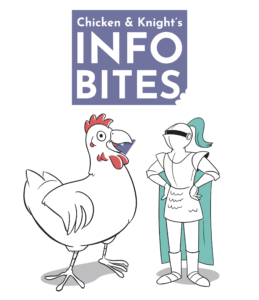
Think about your day so far. How many advertisements have you seen? Between your commute to work, listening to the radio, reading the news, browsing your social media, and everywhere in between: the answer is probably dozens.
How many of those ads do you actually remember? And in the last week or so, how many of those ads have led you to make a purchase?
You see my point: people are bombarded with ads all the time, and only a few break through and make an impact.
As a marketer, you want your ads to be remembered, and you want them to persuade people to buy. So how do you make your message stick?
This elusive quality so many marketers seek is stickiness. And while it sounds messy, it’s really a very clean and clear way to succeed in marketing. Of the ads that you do remember, what about them made them stick? Here are some qualities sticky messages have in common:
(Pro-tip: read through these qualities with your target audience in mind. How can you craft a message that will stick for your particular target group?)
Visually Striking and Unique
Good design makes a world of difference. When you see an on your social media, how easy is it to scroll right past it? SO EASY, unless something about it catches your eye. That split second reaction is enough to get someone to stop, read, and click to learn more. Go for visual that are pleasing, unique, and even surprising.
The same thing is true of a product itself: between two products that do the same thing, the one with the better packaging, design, and overall appearance will win out.
Be Remarkable
What about your company, product, or message is unique? What makes you different from your competitors? Whatever this is, hone in on it. This remarkability is your story and it’s going to make people pay attention to you.
Literally, Remark-able
The root of the word remarkable is remark: You want people to talk about your product. Make it easy for them by keeping your message simple and interesting: something people can talk about (not too complex) and want to talk about (excited to share with their friends).
Build Trust
Building testimonials into your messaging is key to building trust. With access to things like Yelp and ratings on Google, people are able to make informed decisions before they buy. Help them by making good reviews front and center, particularly ones that might speak to particular questions or hesitations.
An interesting way we’ve seen this quality develop is through podcast advertising. When you advertise on a podcast, your spot is read by the host. Loyal listeners will hear this ad as if it’s being recommended to them by a trusted friend, which makes them a really powerful advertising tool. While this strategy might not work for everyone, it’s a great example of how trust-building and testimonials go a long way.
Emotion & Story
To get people to act, you need them to care. What is the core emotion or narrative you hope to evoke? Build this emotion into your marketing. If you are an outdoor supply company, maybe you want your audience to feel inspired and adventurous. If you are a data security firm, you might want your audience to feel safe and trustful. Use these guiding emotions to shape your language and visuals.
A word of caution: people don’t like feeling manipulated emotionally. If they notice this is happening, your emotional appeal can backfire. Make sure you are using emotion in a genuine way to communicate your brand and product.
Memories are a mysterious thing, and unique to everyone. We all have filters and triggers that determine what we notice and what sticks with us. It might be intimidating, but as marketers, we need to use this magnificent aspect of human nature for our benefit, to help us stick in the minds of the people who matter.



